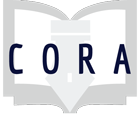Assignment
What makes a source "good"?
In this activity focused on evaluating sources, students respond to the question "What makes a source 'good'?" by collectively brainstorming a list of characteristics they should look for in evaluating a source, then using their list to evaluate different types of sources on the same topic (e.g., a scholarly article, an op-ed, and a news article). As a class, students discuss whether their source was "good" based on the class's list of characteristics and for which types of information needs or settings their source might be most appropriate. This activity is a student-centered, discussion-oriented alternative to providing students the CRAAP test, drawing upon students' existing knowledge on information quality and encouraging reflection and nuanced perspectives on the impact of the construction and contextuality of authority.
- Students will be able to apply their own knowledge of information quality to evaluate different kinds of sources
- Students will understand the role that context, information need, and audience play in evaluating sources.
Information Literacy concepts:
Individual or Group:
Ability Level:
Pose the question to students: What do you look for to determine if a source is "good"? Good can mean trustworthy, reliable, acccurate, etc.
As a class, students brainstorm characteristics (e.g., an author's experience, qualifications, or knowledge) of quality information. As the brainstorm progresses, the instructor creates a list on a whiteboard or slide.
Students break into smaller groups of about 4-5. Each group is given a source to evaluate according to the criteria listed by the class and determines whether the source is "good." The sources are all on the same topic but are in different formats (e.g., a scholarly article, an op-ed, and a news article).
Each group of students summarizes their article for the class and describes how they decided whether their source was good or not. The instructor may follow up with questions: How did you decide? Which factors were most important? Would this be a source you could use in a research paper for your class? Would you use this article to explain this topic to your children? Are there any criteria that the class listed that didn't work for you, or were there characteristics you would add now? The group report-backs and questions encourage class discussion of the nuances of "good," emphasizing the importance of information need, context, audience, etc. Each source may be good for a specific context or to meet a particular need, but not appropriate in every circumstance.
The instructor may share the students' evaluation criteria list with the students after class for them to use in the future.
Whiteboard and marker OR computer projector and Microsoft Word, Google Docs, or other means of recording student brainstorm
3-5 sources on the same topic, but in different information formats
Students are generally readily able to identify characteristics of a source that they may use in evaluating sources. We often frame the brainstorming as an opportunity to draw from their existing knowledge, compiling it in one place and using it to evaluate a variety of information types.
Students often characterize scholarly sources as "good" and other sources as "not good"; in particular, students often describe op-eds and other first person accounts as biased and therefore not to be trusted. These initial perceptions provide an excellent opportunity for discussion about when different types of information may be most appropriate, as well as the importance of personal expertise and knowledge in establishing authority.

